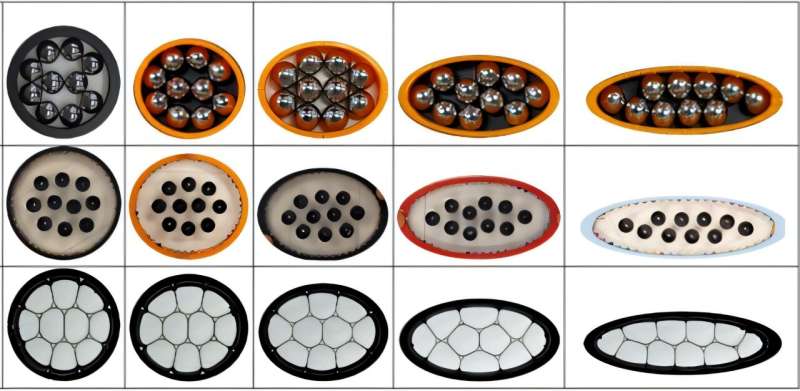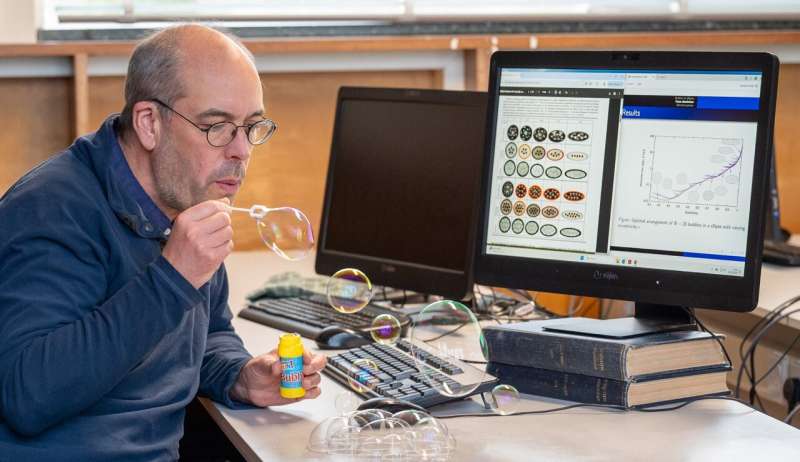
The researchers performed experiments with floating magnets, ball bearings, and soap bubbles. Credit: P. D. S. de Lima et al
Particles as different as soap bubbles and ball bearings can be made to arrange themselves in exactly the same way, according to a new study that could unlock the creation of brand new materials—including those with promising biomedical applications.
The international study, involving Professor Simon Cox from Aberystwyth University, reveals how diverse particles self-organize into identical geometric patterns when confined. The work is published in the journal Physical Review E.
The discovery could help scientists design advanced materials for medical use—including in smart drug delivery systems and targeted therapies. It could also offer valuable insights for tissue engineering, where understanding how biological cells arrange themselves in tight spaces is essential for developing effective scaffolds and regenerative treatments.
The breakthrough was achieved using a simple mathematical model that balances two competing forces—how strongly the particles repel each other, and how tightly they are confined. By tuning these parameters, the scientists were able to predict and reproduce the same arrangements across a range of materials.
To test their theory, the team of researchers from the UK, Brazil and Ireland, performed experiments with floating magnets, ball bearings, and soap bubbles. Remarkably, despite their differences, the particles all settled into the same shapes when placed in carefully designed containers.

Professor Simon Cox. Credit: Aberystwyth University
Professor Simon Cox, from Aberystwyth University’s Department of Mathematics, said, “What’s fascinating is that discrete objects as varied as soap bubbles and magnetic particles can be made to behave in the same way, simply by adjusting how they are confined. It is a powerful reminder that nature often follows universal rules, even when the ingredients look completely different.
“It has been a privilege to work with this international team of scientists, tailoring our computer simulations of material structure to confirm the universality of the patterns seen in experiments.
“Understanding how particles self-assemble in confined spaces is valuable for the design of new materials with tailored properties, such as in biomedical engineering where it could help with developing treatments such as targeted therapies and smart or slow-release capsules. It could also benefit industry, helping with the packaging and transporting of granular materials such as powders, grains, or pellets.”
The work was led by Dr. Paulo Douglas Lima of the Federal University of Rio Grande do Norte in Brazil. The collaboration also included scientists from Trinity College Dublin and Technological University Dublin.
More information:
P. D. S. de Lima et al, Self-assembled clusters of mutually repelling particles in confinement, Physical Review E (2025). DOI: 10.1103/1wcz-hhw6. On arXiv: DOI: 10.48550/arxiv.2506.19772
Provided by
Aberystwyth University
Citation:
Diverse particles form identical geometric patterns when confined, model reveals (2025, November 12)
retrieved 13 November 2025
from https://phys.org/news/2025-11-diverse-particles-identical-geometric-patterns.html
This document is subject to copyright. Apart from any fair dealing for the purpose of private study or research, no
part may be reproduced without the written permission. The content is provided for information purposes only.
